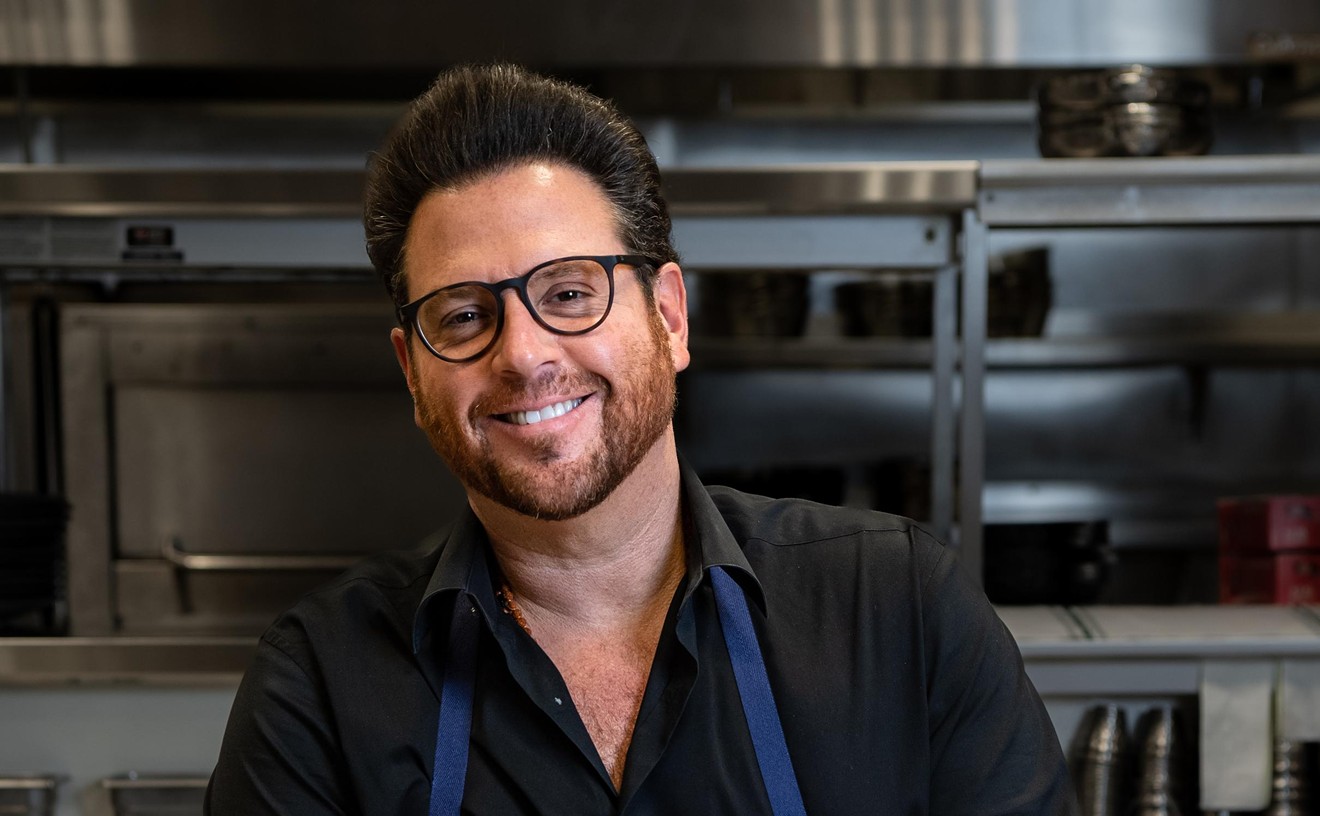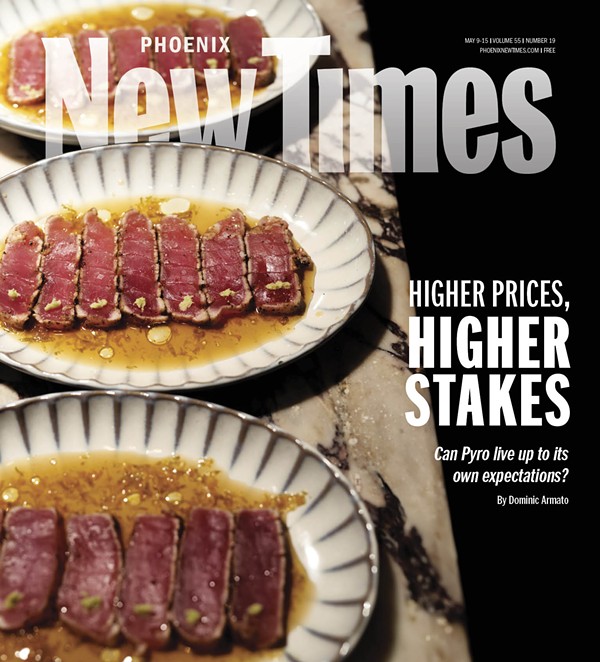This is part two of our interview with chef German Sega of Scottsdale's Roka Akor. Today, he tells us what goes into creating an omakase dinner and shares his pretty peculiar culinary guilty pleasure. (Hint: It involves Spam.) If you missed the first part of the interview, in which Sega gave us the scoop about his time at Sea Saw under chef Nobuo Fukuda and shared his thoughts on Phoenix as a food town, you can read it here.
See also: - Roka Akor in Paradise Valley: Happy Hour Report Card - Robatayaki Dinner at Roka Akor in Scottsdale: Surf, Turf, and a Charcoal Grill
"I have the world to thanks to Nobuo because he first introduced me to this," Sega says, referring to the skill of crafting a personalized meal for -- at least sometimes -- complete strangers based on minimal amounts of information. In other words, the art of omakase. In Japanese, omakase means, "I'll leave it to you," or translated into restaurant lingo something like "Chef's choice." To order omakase at a Japanese restaurant means allowing the chef to choose what dishes he thinks best represent his skill set and ingredients at that time.
From the outside in, it's a pretty impressive feat. If you've ever experienced a great omakase dinner, then you know it can seem like the chef knows what you like better than you do.
"It's a rhythm," says Sega as he lays out a selection of different-size plates and a pile of smooth river stones, preparing to share his thought process when creating the feasts.
He pulls a rectangular plate in front of himself and places four stones on the plate. While doing so, he explains that he might start with one of the restaurant's signature appetizers, for example, the butterfish tataki (represented, for demonstration purposes, by the plate and four stones). He then selects a different plate explaining that since the tataki would have been a cold dish with a horizontal orientation, he would next want to present another cold dish, but of a different visual orientation. He would consider the texture of the food, potential wine or sake pairings, and whether or not the customer seemed to enjoy the first dish.
A huge part of the decision-making process involves reading the guest, he explains. If a customer uses chopsticks instead of a fork, he might assume he or she isn't all that familiar with sushi and will keep things simpler on that front. But if a guest seems to enjoy a mildly unusual dish, he'll keep pushing the boundaries, attempting to give the diner an exciting and enjoyable meal. He's got years of experience that prepare him to anticipate what diners will like based on what he's already given them.
Of course, it also helps when diners engage with the chef, which is why Sega advises those opting for the omakase-style dinner to sit at the bar. That's one way, he says, to guarantee you'll get the best, most unique cuts of fish and a maybe a chance to taste one of the 16 varieties of soy sauce he stocks in the kitchen.
And speaking of dozens of types of soy sauce, Sega is obsessed with procuring the best ingredients. He has a supplier from whom he only buys salt (he keeps more than a dozen different types around) and says his fish suppliers don't bother sending him sub-par products. But it goes beyond just seeking out the best ingredients; he admits that once he gets an idea for a way to use his acquisitions, he becomes completely consumed by the idea.
"I need -- I require, obsessions to move forward," he says.
Local chef you admire and why: There's a handful, not only are they my colleagues but dear friends as well: Bernie [Citizen Public House], Gio [Virtu Honest Craft], and Nobuo [Nobuo at Teeter House].
What was it like working at Sea Saw under Chef Fukuda?: Some of my best memories and anecdotes come from the few years I was working for him; he has been one of the most important mentors in my career.
One thing you would want people to know about Japanese food is: Well, first thing is that you don't have to drown it in soy sauce, wasabi, and pickled ginger! There's a lot of tradition and decorum that goes with Japanese food, and it should be enjoyed as it was meant to. Fusion and different techniques are fine and dandy, but learn how to enjoy the classics before adding cream cheese. And I could go on for pages, but you get the gist.
How would you define a good chef?: A great chef is a great communicator as well as a craftsman. He needs to be able to communicate his vision to his cooks and have them execute it the same way every time all the time.
Is preparing an omakase menu scary as a chef?: Omakase are actually easy. I get to prepare a meal with all the fresh items I'm featuring for the evening, and it gives me a chance to have fun and be creative at a moment's notice.
Your culinary guilty pleasure is: Grilled cheese and spam sandwiches with pickles and tomatoes.
Do you watch Food Network?: I really don't, for a good laugh I'd much rather watch Family Guy.
If you weren't a chef, what would you be doing?: Well, all things considered, since I am tone deaf and can't play any instruments, rock star is out. So chef is just as awesome.
What advice would you give to an aspiring chef: Set your goals high, let your ambitions skyrocket, and just when that 18-hour day is looking like it's going to come to a close, look at yourself in the mirror and ready yourself to work another 18 hours more. Persevere and you will triumph!
What is your goal in life?: To be a better chef than I was yesterday, and to be the best I could possibly be, not for fame or glory but for myself, my teammates, my chef, and my owner.










